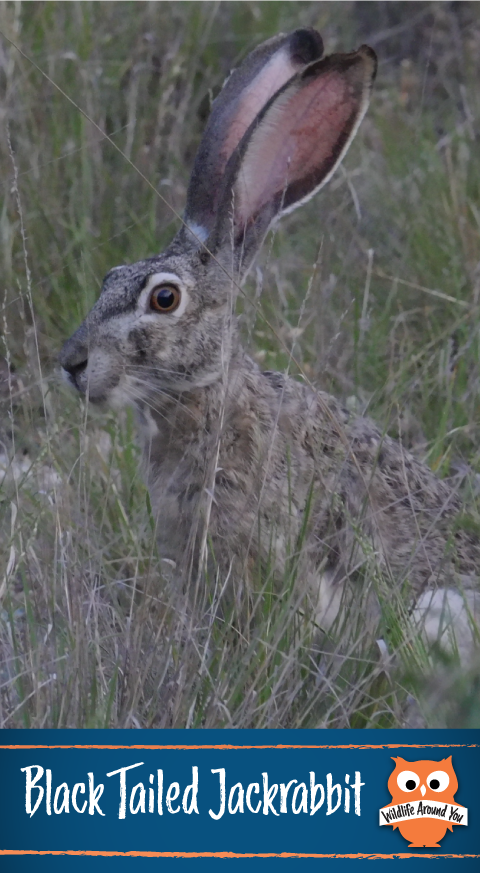Identification
aka American Desert Hare
The most identifying feature is its huge ears.
The ears along with the tail are tipped with black fur.
It has long slender front legs and large hind feet that can be 5 inches in length.
They have large eyes that are high on their head and placed toward the side. This along with their slightly flat head allows them to see almost 360 degrees.
3-7 pounds and are about two feet in length
Habitat
Found from Baja California and south-central Mexico to west-central and western United States. They like open flat places along with desert scrub and mesquite grasslands.
Nesting
Female black-tailed jackrabbits do not prepare an elaborate nest. They give birth in shallow excavations called forms, that are no more than a few centimeters deep. Females may line forms with hair prior to giving birth, but some drop litters in existing depressions on the ground with no further preparation.
Behavior
They live 2-5 years in the wild.
rests during the day and feeds in the late afternoon and the night.
do not migrate or hibernate during winter
Offspring
breeding peaks in spring, but may continue all year round in warm climates. born fully furred with eyes open;
they are well camouflaged and are mobile within minutes of birth, thus females do not to protect or even stay with the young except during nursing.
The average litter size is around four, but may be as low as two and as high as seven in warm regions.
fully weaned by 8 weeks.
Predators
coyotes, Red-tailed Hawks, Ferruginous Hawks, eagles, foxes, bobcats, and humans.
It flashes the white underside of its tail when threatened by a predator. This warns other jackrabbits of danger and can also confuse the predator.
Diet
feeding on grasses, leaves, clover, alfalfa, twigs, seeds, beans, twigs, and cacti
Fun Facts
The large ears help it to lose heat and cool its body temperature.
The black-tailed jackrabbit is not really a rabbit, it is a hare. This is because its young are born with fur and with their eyes already open.
Jackrabbits can run as fast as 40 mph in short bursts in order to escape predators.

